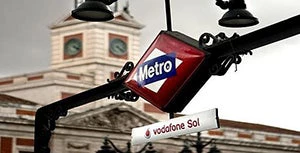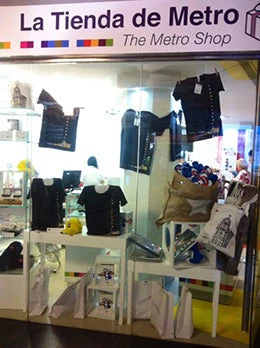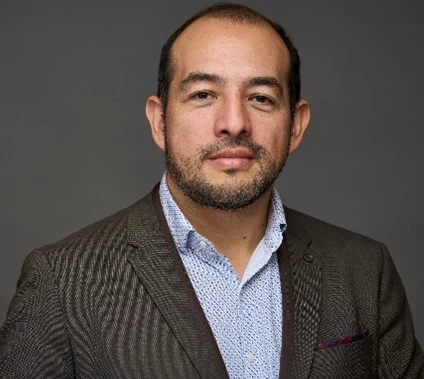Follow the authors on Twitter:
@danpulido and @IrenePortabales

A branded metro station in Madrid
Most metro systems around the world are unable to cover their operating costs with fare box revenues, let alone fund capital expenditures. According to data from international benchmarking programs CoMET and Nova, tariff revenues cover an average 75% of operating costs, while other commercial revenues provide about 15%, resulting in an operating deficit of 10%. Similarly, a back of the envelope exercise that we conducted for Latin American metro companies showed that these had an average operating deficit of 10% in 2012. When including capital expenditures, this deficit grew to 30%. There are of course examples of metro systems that do recoup their operating costs, such as Santiago de Chile and Hong Kong, but others like the Mexico City Metro only cover half of their operating expenses with
fare revenues. We should all mind this funding gap as it is a significant impediment to maintaining service quality and addressing growing urban mobility needs.
Unfortunately, the underfunding of transit systems can become chronic as public budgets are under growing pressure and the most direct solutions for increasing revenues are hard to implement: increasing fares, for instance, has proved to be politically difficult and disproportionately affects the poor, who use public transport the most; and charging a price that fully covers the social cost of private vehicle usage (i.e., congestion charges) as a way to fund transit is also politically sensitive.
In that context, transit operators are increasingly looking at new ways to tap additional sources of commercial revenue and make up for funding shortfalls, often through agreements with the private sector. Although most examples are concentrated in developed countries, some metro systems in Latin America and the developing world are looking at ways to increase non-tariff revenues:
Although tapping into commercial revenue sources could be the next stop for many developing city metros in their journey to financial sustainability, it is certainly not the last. There are no express lines in this journey and closing the gap will certainly require the implementation of more comprehensive reforms of urban transport institutions, tariffs and financing.
Can you think of innovative mechanisms to increase non-tariff /commercial revenues for transit systems? Do you think that these mechanisms can turn into significant and stable sources of funding? Please share your insights using the comment field below

A branded metro station in Madrid
Unfortunately, the underfunding of transit systems can become chronic as public budgets are under growing pressure and the most direct solutions for increasing revenues are hard to implement: increasing fares, for instance, has proved to be politically difficult and disproportionately affects the poor, who use public transport the most; and charging a price that fully covers the social cost of private vehicle usage (i.e., congestion charges) as a way to fund transit is also politically sensitive.
In that context, transit operators are increasingly looking at new ways to tap additional sources of commercial revenue and make up for funding shortfalls, often through agreements with the private sector. Although most examples are concentrated in developed countries, some metro systems in Latin America and the developing world are looking at ways to increase non-tariff revenues:
- Advertising: Earlier this year, the Government of Mexico City announced its intention to renegotiate the advertising management contract that it currently has with a private company to increase revenues from over 70,000 advertisement spaces. Technology can also help in generating extra advertising revenues: Madrid will soon launch a system that will display animated announcements along the tunnels of Line 8 and bring an additional $500,000 a year in revenues. Similar systems are already successfully operating in Beijing and Santiago.
-
Leasing of commercial spaces: Franchising consultants have indicated that commercial spaces in the metros of Rio and Sao Paulo are underpriced, with lease spaces per square meter estimated to be 30% to 60% lower than in a shopping center. The National Public Transport Association (ANTP) of Brazil has also reported that various commercial spaces located inside the stations of Belo Horizonte Metro Line 1 are leased at prices significantly below market. In this context, public officials in Brazil are starting to look at ways to maximize revenue from commercial spaces. For instance, the State of Sao Paulo pushed to increase the share of non-fare revenues in the business model of the recently awarded Line 6 concession.

Stores in a Santiago Metro station
- Naming Rights: The sale of naming rights or branding is also being exploited by various metro systems to get some extra cash. Since 2010, Dubai’s Roads and Transport Authority (RTA) has earned more than $540 million from the sale of naming rights for 13 metro stations, and from leasing retail outlets inside stations. According to RTA, such revenues cover 60% of the network’s operating and maintenance costs, with the intention of reaching 100% by 2017. In some cases, the sale of naming rights also results in added benefits for users. For instance, in 2011, the Baixa-Chiado metro station in Lisbon was remodeled and equipped with free Wi Fi sponsored by Portugal Telecom (PT) as part of an agreement to name the station “PT Blue Station”. The branding of stations as a funding mechanism is not limited to high-income countries. In India, following the experience of the Gurgaon Rapid Metro, the Mumbai Metro has recently auctioned station naming rights for 12 stations, at prices ranging between $250,000 and $1,000,000 per year for five years.
-
Merchandising: The best illustration of metro systems’ merchandising potential is probably the London underground, whose iconic logo and “Mind the Gap” announcement are recognized worldwide. The London Transport Museum earns about $ 4 million annually from the sale of official merchandise. Developing city metros are following suit: Six months ago, two years after the Sao Paulo metro company issued guidelines for the exploitation of products bearing its name, the first store offering metro merchandise opened in the Consolação Station on Line 2 of the city’s Metro.
"Metro Shop" in Madrid - Consulting services and technology sales: Urban transport operators in the developed world have long been offering consulting services internationally, including: RATP (Paris), MTR (Hong Kong), TMB (Barcelona) and Metro de Madrid (Madrid). This last one made about $25 million from consulting services alone in 2012. Metro companies in the developing world are starting to get into this business, and some of them are even making money by advising their peers on how to boost revenue. Metro de Santiago, for example, is helping the Panama City Metro evaluate business opportunities to increase non-tariff revenues. In addition, Metro de Santiago also sold its “Multivia” fare card technology to the company in charge of deploying the electronic fare collection system in Panama City.
- Land Value Capture: An entrepreneurial way of capturing part of the increase in land value that results from transit investments (one that goes beyond imposing taxes) holds the greatest potential for increasing non-fare revenues. This can be done through various transactions with the private sector, including: selling or leasing land, charging real estate developers for the right to build taller buildings and participating in urban redevelopment projects. These mechanisms have been used with great success by rail operators in Tokyo (Tokyu Corporation) and Hong Kong (MTR Corporation), where the contribution of property and commercial developments to net operating profit has even exceeded that of transport operations. However, this experience has been hard to replicate in the developing world. In Latin America, Sao Paulo sold additional construction rights (known as CEPACs) to private developers, mobilizing about $100 million for Line 4 of the city metro.
Although tapping into commercial revenue sources could be the next stop for many developing city metros in their journey to financial sustainability, it is certainly not the last. There are no express lines in this journey and closing the gap will certainly require the implementation of more comprehensive reforms of urban transport institutions, tariffs and financing.
Can you think of innovative mechanisms to increase non-tariff /commercial revenues for transit systems? Do you think that these mechanisms can turn into significant and stable sources of funding? Please share your insights using the comment field below




Join the Conversation